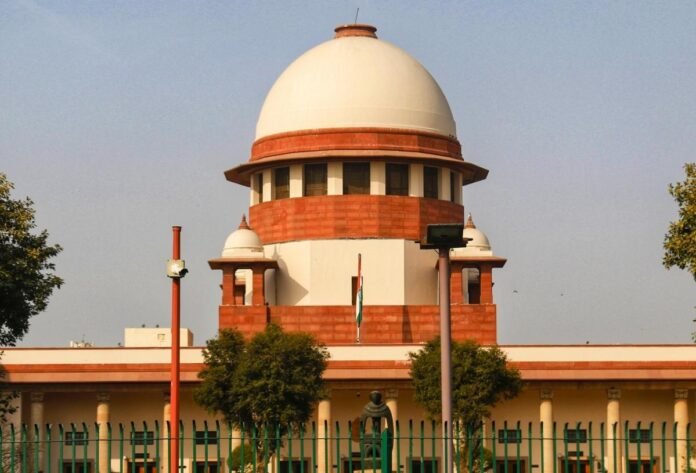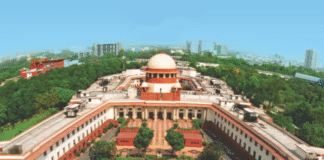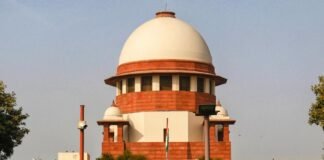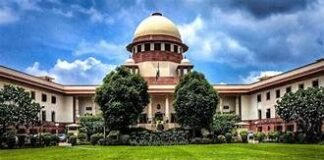Supreme Court rejects a year-long construction ban in Delhi NCR while reviewing air pollution, calling for balanced action under GRAP. | The Legal Observer
The Supreme Court on Monday declined to impose a year-round construction ban in Delhi NCR, emphasising that extreme curbs could harm millions dependent on the sector.
Supreme Court Declines Extreme Curbs, Calls for Balanced Measures
The Supreme Court, hearing the worsening air pollution crisis in Delhi–NCR, made it clear that it was not inclined to order a year-long construction ban, stating that such a sweeping restriction would “jeopardise the livelihoods of millions” working in the region’s vast construction ecosystem. The Bench observed that any judicial intervention must remain practical, evidence-based, and consistent with existing frameworks such as the Graded Response Action Plan (GRAP).
Senior Advocate Gopal Sankaranarayanan, appearing for lawyers intervening in the MC Mehta pollution matter, pressed the Court to acknowledge what he described as an “emergency situation.” Citing alarming health data, he argued that pollution-related deaths and rising lung cancer cases warranted drastic interventions, including a complete ban on construction and even private vehicles.
“We all have to make sacrifices,” he submitted, referring to studies indicating that three in ten deaths in the NCR are caused by air pollution, especially affecting children.
However, the Supreme Court signalled caution, noting that while the situation was serious, a blanket construction ban for an entire year could severely destabilise the region’s labour-driven economy and hamper essential public infrastructure projects.
GRAP Already Provides a Structured Framework, Says the Court
Reinforcing its stance, the Court reminded stakeholders that the Commission for Air Quality Management (CAQM) already implements dynamic restrictions under GRAP, the policy mechanism guiding Delhi NCR pollution response.
Under GRAP Stage III and IV, construction and demolition activities—except those related to essential public works—are already restricted when AQI breaches severe levels. The Bench reiterated that judicial overreach should not replace an established regulatory framework, and any modification must flow through expert-led mechanisms.
In previous hearings, the Supreme Court had stressed the need for better coordination between States, pollution control boards, and the CAQM, urging them to ensure timely enforcement and public transparency.
AQI Levels Remain in Severe Range, Raising Health Concerns
Recent AQI data shows that parts of Delhi continued to record values in the ‘Severe’ or ‘Severe+’ category, especially during early winter when stubble burning, transport emissions, and meteorological stagnation combine to create smog episodes.
Medical experts quoted by environmental law researchers note that prolonged exposure at such levels can lead to irreversible lung damage, with children, the elderly, and outdoor workers facing the highest risk. Public health data consistently indicates spikes in respiratory illnesses, hospital visits, and asthma-related complications during severe-pollution periods.
The Court acknowledged these concerns but clarified that solutions must be sustainable and enforceable, rather than reactive directives that disrupt employment and essential services.
Court Asks States to Strengthen Compliance, Not Impose Absolute Bans
The Bench directed Delhi and adjoining States to strictly enforce existing GRAP norms, improve road vacuuming, curb industrial violations, and intensify checks on vehicular emissions. It also called for:
- Improved monitoring of construction sites
- Strict action against waste burning
- Enhanced public advisories during severe pollution episodes
The Court emphasised that the onus lies equally on governments, regulators, and citizens, urging authorities to adopt technology-driven monitoring, including real-time sensors and satellite data.
In its earlier orders, the Supreme Court had warned that non-compliance could invite contempt, specifically from agencies failing to enforce pollution control norms. It underscored that long-term solutions must involve regional cooperation, especially with Punjab and Haryana, to address stubble burning.
Experts Call for a Multi-Pronged, Not Singular, Strategy
Air quality experts warn that while construction activity contributes to particulate matter levels, it cannot be isolated as the dominant pollutant. The pollution mix in Delhi NCR involves vehicular emissions, industrial sources, biomass burning, and geographic constraints.
Several environmental analysts, writing for platforms such as The Legal Observer’s Insight section (https://thelegalobserver.com/category/views/insight/), argue that multi-sector reforms—cleaner public transport, industrial transition, agricultural support, and urban planning—must be prioritised to achieve lasting improvements.
Readers can explore broader analyses on Delhi NCR pollution trends under the National News section on The Legal Observer (https://thelegalobserver.com/category/news/national/) and follow expert panel videos via the publication’s YouTube channel (https://www.youtube.com/@thelegalobserver).
Public Awareness and Transparency Remain Key
The Supreme Court reiterated that effective pollution management also depends on public participation, urging citizens to follow health advisories and reduce non-essential vehicle use during high-pollution days. It encouraged media platforms, including The Legal Observer (https://thelegalobserver.com/), to continue offering accessible and accurate reporting on pollution and policy responses.
By declining a year-long construction ban, the Court has sent a clear message: solutions must be balanced, science-driven, and socially responsible, not reactionary measures that risk widespread economic hardship.





